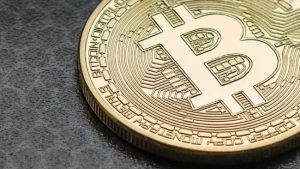NASA’s Future, Collagen Revolution, and Heart Repair: This Week in Innovation
In this week’s roundup of significant scientific and technological developments, we see potential major shifts at NASA, innovative approaches to domestic manufacturing, and groundbreaking medical advances that could change lives. These stories highlight how innovation continues to reshape our world across multiple sectors, from space exploration to biotechnology.
President Trump has once again nominated billionaire Jared Isaacman as NASA administrator, reviving a selection that had previously been withdrawn shortly before confirmation. Isaacman’s nomination is notable for its bipartisan support from astronauts and industry leaders alike. The potential appointment comes with significant implications for NASA’s future, as outlined in Isaacman’s “Project Athena” memo. In his social media post confirming the document, Isaacman proposed transforming NASA into a more decentralized organization with streamlined decision-making processes. His vision includes an increased focus on crewed missions, maintaining commitment to the Artemis program for establishing a lunar presence, fostering deeper collaboration with commercial space companies, and expanding planetary science through more numerous but less expensive missions. “The more I see the imperfections of politics,” Isaacman wrote, “the more I want to serve and be part of the solution,” signaling his commitment despite the previous withdrawal of his nomination.
An exciting development in biotechnology comes from Nortian Biotech, a Kansas City-based company revolutionizing collagen production in the United States. With a recent $41 million investment round valuing the company at $100 million, Nortian aims to address a curious market gap: despite the U.S. being a major source of cattle hides, approximately 80% of the $2.5 billion American collagen market relies on imports. The company, founded in 2024 by Brazilian entrepreneurs Andre Albuquerque, Gabriel Prats, and Diego Rolim, has developed a proprietary enzymatic process that extracts collagen directly from animal hides. This innovative approach bypasses the traditional gelatin-first method, resulting in both a purer product and lower production costs. Beyond collagen manufacturing, Nortian has ambitious plans to expand into creating other valuable ingredients from animal waste, with Albuquerque describing their ultimate goal as “a full recycling company using biotechnology to develop the best ingredients for food supplements and the pharmaceutical sector.”
Perhaps the most emotionally resonant scientific breakthrough this week comes from the Mayo Clinic, where researchers have developed a stem cell-powered “patch” that could potentially repair damaged hearts with minimal invasiveness. The technique utilizes heart tissue grown from reprogrammed stem cells, which can be delivered through a small incision rather than requiring open-heart surgery. Having demonstrated success in laboratory settings, the research is now advancing to larger-scale testing before human trials begin. If successful, this approach could offer hope to patients who would otherwise require mechanical implants or even heart transplants, representing a significant advance in cardiovascular medicine that builds on the growing field of regenerative therapies.
In space exploration news, Blue Origin is preparing for the second launch of its New Glenn rocket, which will carry NASA’s Escapade spacecraft to Mars along an unprecedented route to study the Red Planet’s magnetic field. Meanwhile, technological innovation continues in the neuroscience realm, with MIT researchers developing microscopic wireless implants that can be injected into the bloodstream and autonomously navigate to specific brain regions to deliver electrical stimulation for treating conditions like Alzheimer’s disease and cancer. The quantum computing landscape is also advancing, as Spanish company Qilimanjaro Quantum Tech has opened a new data center capable of hosting up to ten quantum computers with different architectures, potentially supporting thousands of users and accelerating practical applications of quantum technology.
Educational research highlights the potential negative impacts of the recent surge in book bans across American schools. According to a paper by Dr. Danielle Dennis, Dean of the University of Rhode Island Feinstein College of Education, such restrictions may significantly affect student performance. The connection lies in reading volume—one of the strongest predictors of educational success is simply how much students read. Book bans create a cascade of limitations: reduced access to materials, reluctance among librarians to recommend certain books, and hesitancy from teachers to facilitate discussions about potentially controversial topics. The resulting climate of censorship ultimately reduces how much students read, potentially undermining their academic achievement across various subjects. This research serves as a reminder that policies intended to protect students may sometimes have unintended consequences for their educational development.
For entertainment that blends intelligence with accessibility, the ABC show “High Potential” (streaming on Hulu) offers a refreshing take on the procedural drama format. The series follows Morgan Gillory, brilliantly portrayed by Kaitlin Olson, whose exceptional intelligence makes her both gifted and sometimes socially challenged. Working as a cleaning woman while raising her child as a single mother, Gillory’s natural talent for puzzle-solving and intuitive thinking inadvertently leads her to become a police consultant. The show captures the spirit of beloved procedurals like “Psych” and “Monk,” delivering engaging mysteries while exploring the complexities of navigating life with an extraordinary mind. With supporting performances from accomplished actors including Daniel Sunjata and Judy Reyes, “High Potential” provides both entertainment and a thoughtful examination of how different types of intelligence contribute to solving problems in unexpected ways.















